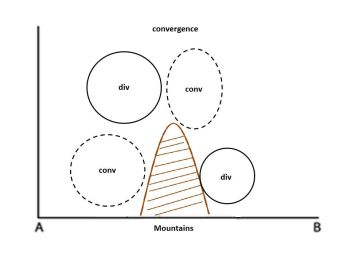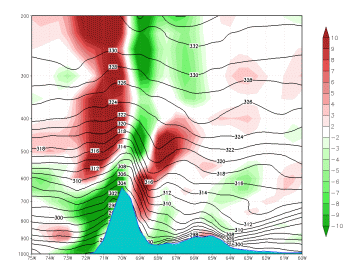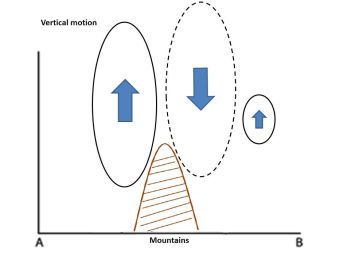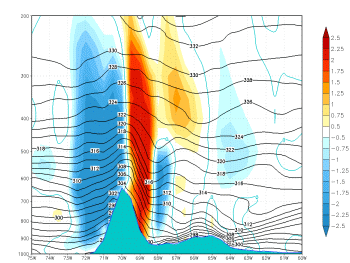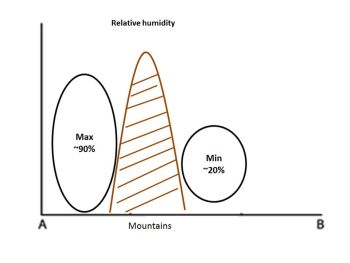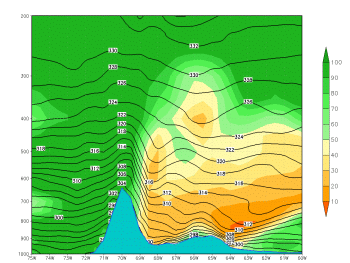Typical Appearance In Vertical Cross Sections
Regarding the following NWP vertical cross sections, it should be noted that the low resolution of NWP models simplifies topographical shapes and how they influence the tropospheric flow.
-
Potential Temperature:
The potential temperature field shows a stable layer on the windward side, near the mountain top. On the lee side the troposphere is less stable, with strongly tilting isentropes. -
Zonal Wind:
Areas of maximum velocity of winds at high levels descend on the lee side. -
Divergence:
On the windward side, strong convergence from the ground to the mountain top level and divergence above it. On the lee side, convergence at high levels and divergence below it (not quite reaching the ground level). -
Vertical Velocity:
Maximum upward motion on the windward side and maximum downward motion on the lee side. -
Relative Humidity:
This field resembles the differential vertical motions and the different cloud structures at both sides of the mountains. Thick humid layer on the windward side, dry layer on the lee side.
Cross sections are taken along 32.5°S (green line) on 12. July 2006 at 06 UTC:
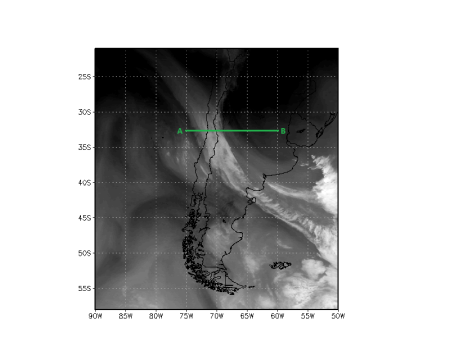
|
Potential Temperature and Zonal Wind
|
Vertical cross section along 32.5°S. Zonal wind velocity (shaded); black: isentropes (theta-e) on 12 Jul 2006 at 06 UTC.
|
|
Divergence
|
Vertical cross section along 32.5°S. Divergence (shaded); black: isentropes (theta-e) on 12 Jul 2006 at 06 UTC.
|
|
Vertical Velocity
|
Vertical cross section at 32.5°S. Vertical velocity (omega, shaded); black: isentropes (theta-e) on 12 Jul 2006 at 06 UTC.
|
|
Relative Humidity
|
Vertical cross section along 32.5 °S. Relative humidity (shaded), black: isentropes (theta-e) on 12 Jul 2006 at 06 UTC.
|
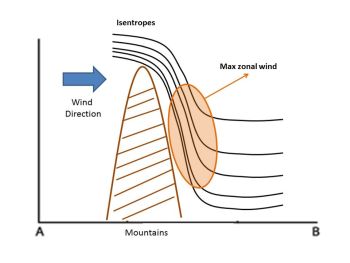
k.gif)
